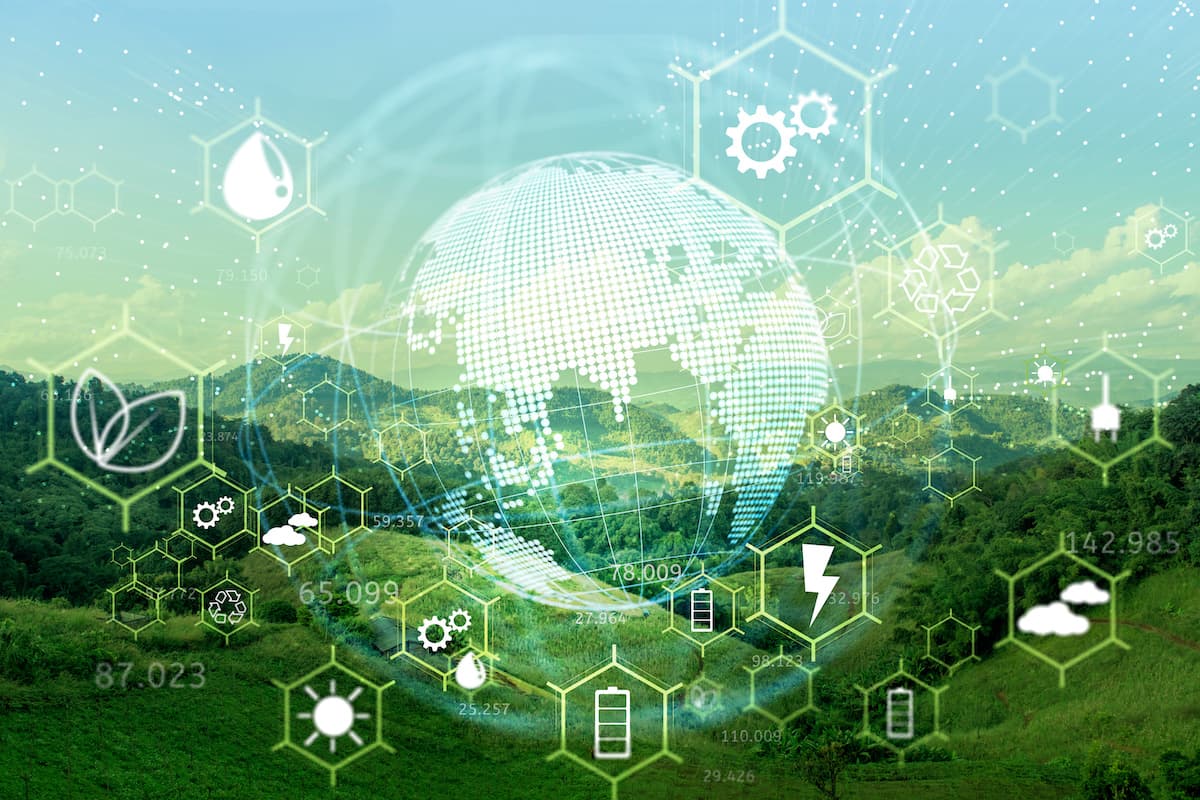Humans have sadly been destroying the earth for a while now, but clever heads are always looking for ways to save it.
The following are some of the most interesting uses of technology that mankind is currently using to better earth and undo some of the damage we have done to it.

1. Ocean Clean Up

Waste is a huge issue, but it’s particularly prevalent in our oceans and waterways. Plastic pollution is especially problematic. “Seabin” is one clever solution to tackle the issue. It is a simple, but brilliant gadget that works like a drain. As water washes over the top, it collects the trash and pollution inside. Then, Seabin is emptied in a more environmentally friendly way.
Along with Seabin there are other technologies being developed to help deal with plastic waste in the ocean. One such thing is the use of self-propelled microrobots designed to use visible light to break down dangerous plastic waste and help save the seas.
2. Solar Panels
Conserving the environment requires using renewable energies, and even a small amount of action can make a difference. There are so many new technologies coming out centered around solar panel materials. We are now able to drive on solar panel roads and utilize solar panel glass in our homes and offices.
Roads obviously take up a large amount of space in the developed world. Now researchers are attempting to make the most of them with tech. Besides sending electricity to the national grid, these solar panel roads can also be heated and made safer by utilizing the energy contained in them.
Solar glass panels could be installed in place of normal windows, making it much easier to add solar panels to your home. The research suggests that this glass could account for as much as 40 per cent of US electricity generation if it was installed in enough homes.
3. Carbon Computing
A lot of big-name companies have been working on ways to use carbon friendly computing. It utilizes this logic at its data centers where the heavy workload is done during times when renewable energy is at its most plentiful. When the sun is shining and the wind is blowing, more work is accomplished – and less fossil fuel energy is used. It’s obvious that such a mindset is a great way for businesses to reduce their environmental impact, and the more they practice it, the better.
4. Graphene

This isn’t quite a technological advancement as such, but instead could be incorporated into many future technologies, including those with planet-healing capabilities. Graphene is a material that was originally discovered by the University of Manchester. It is made from a thin layer of graphite and is said to be flexible, transparent, conductive and more. This means that it can be used in everything from water filtration to photovoltaics.
5. Electric Vehicles

Cars and vehicles have always been a big part of the problem when it comes to the environment. We rely on cars for getting around, delivering our goods, going to work, traveling, and more, but traditional fossil fuel-powered vehicles pollute the environment. We should adopt electric vehicles sooner rather than later, as they are the future.
6. Lab-grown Food
Research shows that livestock is responsible for 14.5% of global greenhouse gases. People are going to continue to eat meat, but with so many plant-based options out there, many people are switching to lab-grown or non-meat options.
Lab-grown meat is one answer. As a result, we would be reducing the impact on the planet, since we wouldn’t be breeding animals for slaughter, and all the effects that come with manufacturing and transportation. Scientists have also created cultured lab-grown meats that mimic the texture and taste of real meat.
Another answer to this issue is 3D printed food. In the future, you may be able to print cakes, pizza, or other foods that are just as delicious as the ones you’re used to eating now.
7. CO2 Absorbing Buildings
Unfortunately, there aren’t enough trees to suck in all the CO2 we produce. Luckily scientists and researchers have developed some ways to absorb CO2. A company called EcoLogic Studio has developed an interesting solution in the form of an algae-based outer shell for buildings. This technology sucks in polluted air, captures the CO2 in the algae then releases photosynthesized oxygen back into the surroundings. The algae can then be used as a fertilizer.
8. Air Powered Electricity
The University of Massachusetts Amherst has developed a technology that can generate electricity using moisture in the air. Essentially, it generates electricity from thin air with electrically conductive protein nano wires. In the future, we could see more of this renewable energy source, which is easily accessible anywhere.
9. New Ways to Recycle Glass

The company “DB Breweries” in New Zealand, developed a machine that crushes beer bottles into sand. It is intended that the resulting sand can then be used to supply the construction industry and work as a replacement for taking sand from the local beaches. Moreover, people will be more inclined to recycle in the future since they can see recycling in action.

10. Aquaponics
Aquaponics is an interesting and sustainable farming solution. It works quite simply by combining fish tanks with plants. Natural waste produced by fish contains nutrients that can be used as fertilizer. By passing the water through a hydroponics system, the plants get to feed and at the same time remove the nitrogen waste from the water which is then returned to the fish tank.
In conclusion, technology is helping to shape the way that we not only utilize the environment but help save it. Researchers and scientists have come so far in their abilities to help improve our existing environmental needs and conditions.
Fuente: sierraexperts
Bachelor’s Degree in Environmental Engineering
More news about Environmental Engineering

